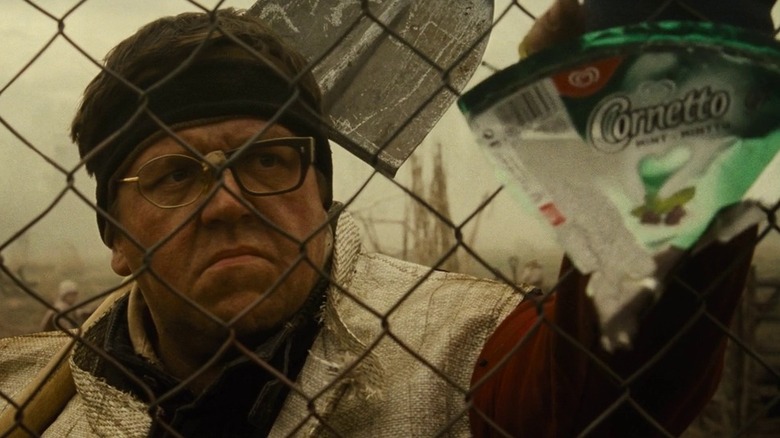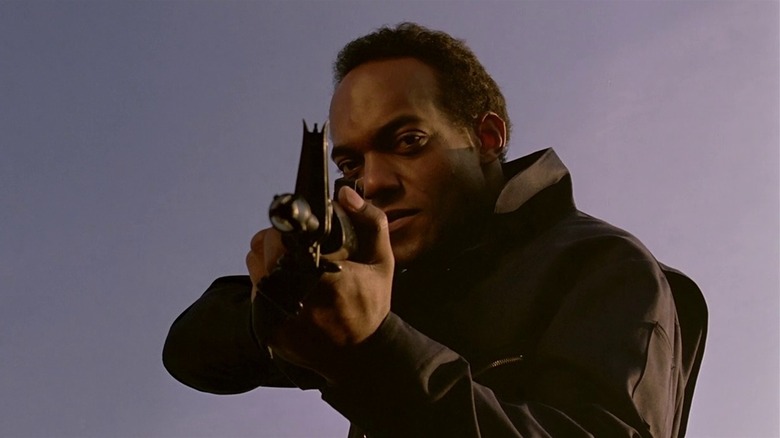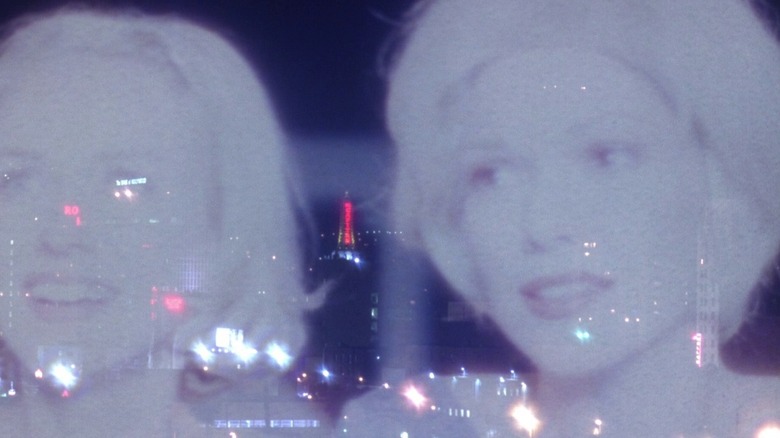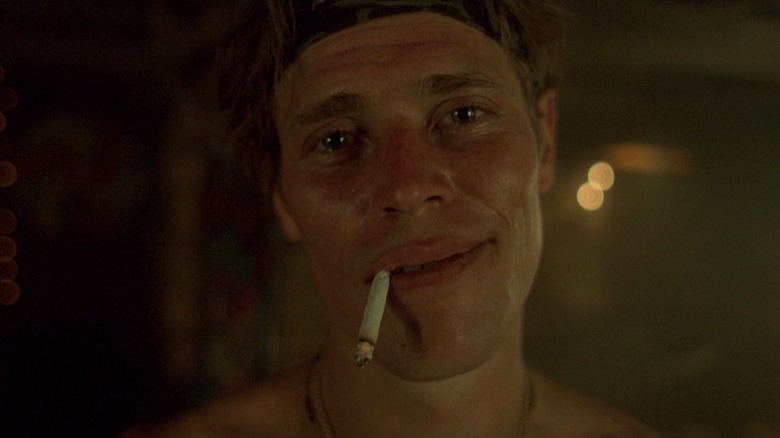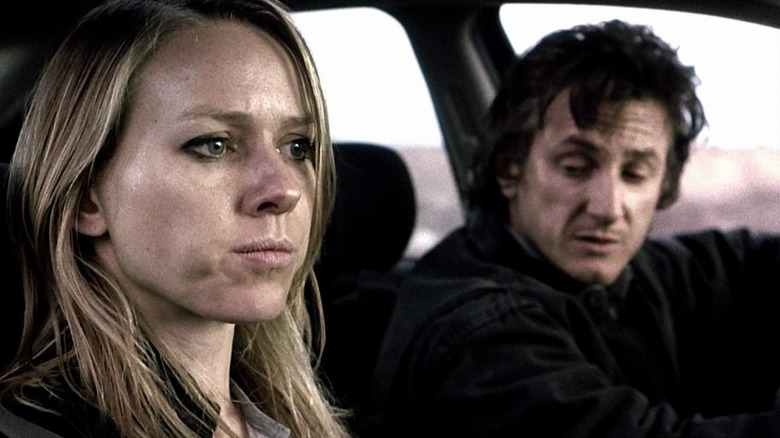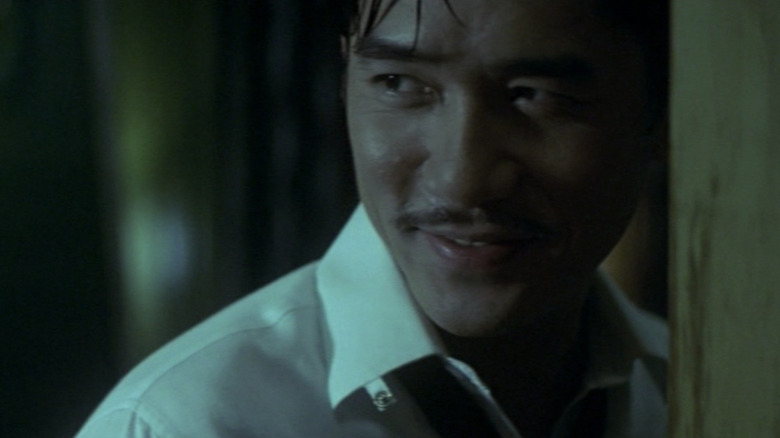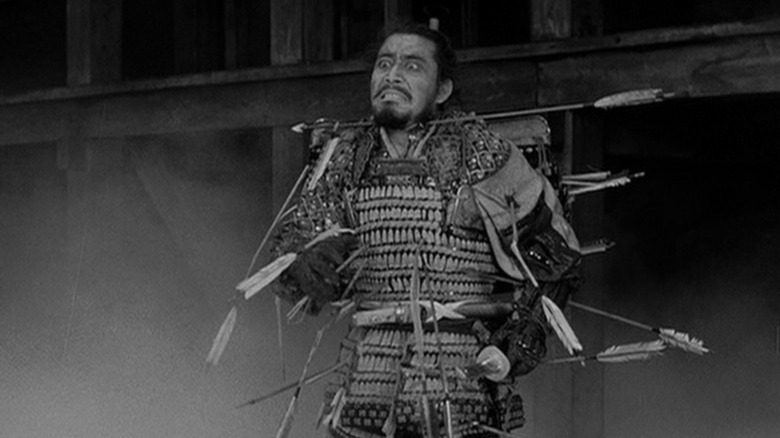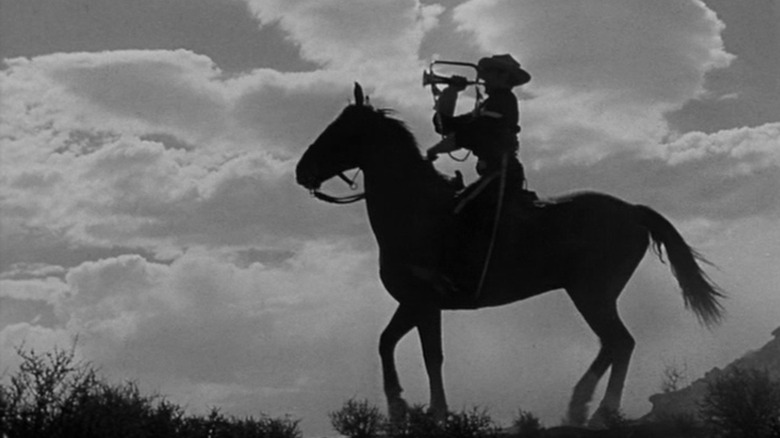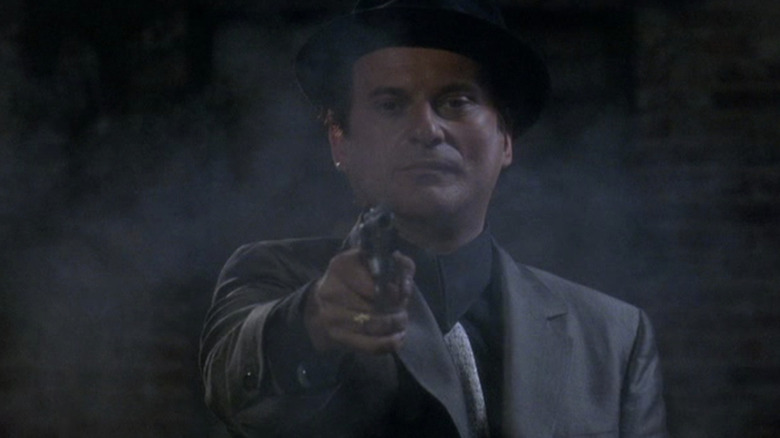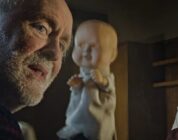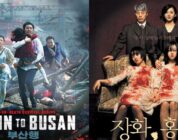Most movie trilogies have two things in common: 1.) there are three movies (duh) and 2.) they are official (huh?). By “official,” I mean the films are recognized to follow the adventures (or misadventures) of the same character(s). Sometimes their adventures are different stories (“The Godfather” trilogy); other times it’s the same story broken up into three chapters (“The Lord of The Rings”). But while the greatest film trilogy of all time is perhaps the most oft-debated topic in online movie discourse (well, that and “Is ‘The Last Jedi’ a good ‘Star Wars’ movie?), we don’t talk nearly enough about the best unofficial movie trilogies. What do I mean by “unofficial?”
If “official” trilogies follow the same character(s) over three parts, then “unofficial” trilogies don’t. So what makes it a “trilogy?” It’s a filmmaker exploring the same themes, settings, character types, and/or source material across three similar, but completely different, films. In fact, unofficial trilogies are usually not even defined as trilogies by the filmmaker themselves, but are recognized as such by film fans and scholars, sometimes decades later. Thus, it’s open to interpretation whether the three films even qualify as a trilogy in the first place. Point being, you may not only disagree with my ranking, but the films I’m counting as trilogies. But guess what? That’s part of the fun (so don’t @ me). So let’s discuss which movies are part of unofficial trilogies — and which are the best of all time!
12. Edgar Wright’s Cornetto Flavours Trilogy
Cornetto (Italian for “little horn”) is a packaged ice cream cone company that hails from across the pond. While they’re not widely available stateside, you can satiate your appetite for sweet cinematic treats with Edgar Wright’s “Three Flavours Cornetto” trilogy. This British anthology series is so-called because each film features Cornetto ice cream (the dessert equivalent of an Alfred Hitchcock cameo), and because each tackles a different “flavor” of genre, while still being undeniably a comedy.
“Shaun of the Dead” arrived first, telling the story of the titular Shaun (Simon Pegg) whose loser lifestyle is disrupted by his small town being invaded by the undead, forcing the man-child to “man up” and save the day from man-eating zombies. The 2007 buddy cop action comedy “Hot Fuzz” finds “Shaun” star Pegg playing a different kind of character; a badass big city cop reassigned to the sticks for being “too exceptional.”
Wright finished his trilogy with the sci-fi epic “The World’s End” in 2013 (thankfully missing the end of days predicted in 2012). Pegg’s back to playing an immature doofus, whose pub crawl with his pals turns into a fight for the survival of the human race. Given Wright and friends hilariously lampoon the film genres they clearly love, watching the Cornetto trilogy is like savoring a delicious dessert, minus the calories.
11. Quentin Tarantino’s Revisionist Revenge Trilogy
“History is written by the winners” goes the old saying. Well, history written by Quentin Tarantino tells a very different story. In QT’s textbook, history’s marginalized, maligned, and murdered get their blood-soaked vengeance. “Inglourious Basterds” finds Lt. Aldo Raine (Brad Pitt) and his team of Jewish soldiers being granted wide latitude by Allied forces to take out German soldiers during World War II. Or as Lt. Raine puts it: “We’re in the Nazi killin’ business, and cousin, business is a-boomin.” Moviegoers realized Tarantino wasn’t following history’s script when the Basterds gunned down Adolph Hitler, and blew up a theatre full of the Nazi high command.
Three years later, Tarantino continued the trend with the tale of Django (Jamie Foxx), a freed slave who joins forces with a German dentist/gunslinger (Christoph Waltz) to rescue Django’s wife (Kerry Washington) from a sadistic slave-owner (Leonardo DiCaprio). While Tarantino still satisfied his blood lust in “The Hateful Eight,” he returned to revisionist revenge films with “Once Upon A Time … In Hollywood,” which reimagines the Manson family murders with Sharon Tate (Margot Robbie) not only surviving, but the murderers being torched by flamethrowers. Whether you find Tarantino’s revisionist revenge trilogy cathartic or disrespectful (or some combination of the two), there’s no denying it’s the sort of unflinching, unapologetic, and wholly unique cinema he’s famous for.
10. George Romero’s Original Dead Trilogy
Zombie movies have lumbered across screens since 1932’s “White Zombie,” but its story of a zombie master named “Murder” (Bela Lugosi) wooing — well, or rather, voodooing — his unrequited love didn’t inspire many imitators. The filmmaker who established zombie media as we know it was George Romero. Now, I know what you’re thinking: “didn’t George Romero make six ‘Dead’ movies? Can’t you count?'” The answers are “yes” and “maybe?” Remember, unofficial trilogies can follow certain themes, not just genres. Besides, even official trilogies can be ambiguous (e.g. the Skywalker Saga has three trilogies; the Jurassic films have two trilogies and counting). And before you ask, Romero’s “Dead” movies aren’t official trilogies either, as they don’t occur in the same universe.
Thus, I’m only including Romero’s first three “Dead” films, as each follows survivors in one location being overrun by zombies in real time (unlike “Diary of the Dead,” a found footage movie). “Night” is the OG, and while some may find it as slow-moving as its antagonists, there’s no denying its influence. “Dawn” is Romero’s masterpiece, as the mindless horde marching through a mall remains a formidable metaphor. Finally, “Day” finds scientists trapped with trigger-happy soldiers inside a missile silo where they battle zombies, and each other. Romero’s first three “Dead” movies show the horror maestro laying the genre foundation other filmmakers copied, himself included. While each features trapped characters, they freed the genre to become among the most dominant in horror.
9. David Lynch’s Hollywood Trilogy
David Lynch marched to the beat of his own drum during his multi-decade career. Given his most “mainstream” movie was adapting Frank Herbert’s “unfilmable” tome “Dune,” the director’s tastes weren’t exactly conventional (though I’d have loved to see Lynch’s “Return of the Jedi”). From “Eraserhead” to “Twin Peaks,” Lynch loved weirdness, so naturally there was no place on the planet that fascinated him more than Hollywood, USA. The quirky kid from Missoula, Montana explored his new homeland’s myriad mysteries and horrors in his Hollywood Trilogy –- “Lost Highway,” “Mulholland Drive,” and “Inland Empire.”
“Lost Highway” tells the tales of a musician (Bill Pullman) and mechanic (Balthazar Getty) who have nothing in common, save their link to the same woman played by one actress (Patricia Arquette). Maybe Lynch’s most celebrated movie, “Mulholland Drive,” is about a perky Midwesterner (Naomi Watts) whose dreams of stardom are disrupted by the arrival of an amnesiac (Laura Harring). In “Inland Empire” Lynch favorite Laura Dern plays an actress whose husband (Peter J. Lucas) becomes jealous of her romantic leading man (Justin Theroux). Given this is Lynch, these are just surface level descriptions. Each film has layers that shatter like their character’s sense of identity, as they’re chewed up and spat out in the make-believe land of Tinseltown. As a place that blends fantasy with reality, there was no more fertile playground for Lynch’s imagination.
8. John Carpenter’s Apocalypse Trilogy
“Post-Apocalyptic” fantasy is all the rage across movies, TV, books, you name it, which definitely says something about our collective psyche (not sure what, but I know it ain’t good). Anyway, long before “The Walking Dead,” “The Last of Us,” “The Leftovers,” “Flow,” or whatever your favorite “end times” story is, there was John Carpenter’s Apocalypse Trilogy. No, these movies aren’t post-apocalyptic, per se … more like pre-apocalyptic.
The unofficial trilogy starts with “The Thing,” Carpenter’s remake of Howard Hawks’ “The Thing From Another World.” Though credited to Christian Nyby, the 1951 original bears all of Hawks’ hallmarks in the same way Carpenter’s 1982 remake does his. This tale of research scientists trapped with an evil, shape-shifting alien in Antarctica is rightly considered a sci-fi horror classic, but don’t sleep on its unofficial follow-ups. “Prince of Darkness” stars Donald Pleasance as a priest battling an unholy vial of slime that transforms academics into zombies, and turns out to be the essence of Satan (just trust me, it’s great). Finally, “In The Mouth Of Madness” finds Carpenter channeling H.P. Lovecraft in a cosmic horror about an insurance investigator (Sam Neill) whose travels to a sleepy New Hampshire town turns into a journey into a living nightmare. As you can tell these are profoundly different movies, yet share Carpenter’s macabre and morbid fascination with humanity’s ultimate demise.
7. Oliver Stone’s Vietnam Trilogy
Many movies have been made about the Vietnam War, but the three directed by Oliver Stone carry greater authenticity because he actually served in that war. Despite his Ivy League background, Stone enlisted in the U.S. Army in 1967, distinguishing himself in combat with two Purple hearts and a Bronze Star. Upon his honorable discharge, Stone studied Film at New York University (under Martin Scorsese, no less), and eventually brought both his training and experience to his movies, especially his Vietnam trilogy.
“Platoon,” the first of Stone’s unofficial trilogy, was both the most celebrated — winning Oscars for Best Picture and Best Director — and the most autobiographical. Charlie Sheen plays a university student who enlists for combat, but loses his idealism after being pitted between the sympathetic Sgt. Elias (Willem Dafoe) and the psychotic Sgt. Barnes (Tom Berenger). Stone goes from autobiography to biography for “Born on the Fourth of July,” the biopic of Ron Kovic (Tom Cruise), a Marine who is paralyzed fighting overseas, and brings the battle back home as an impassioned war critic. “Heaven & Earth” falls short of its predecessors, but still can be moving at times in its story of a Vietnamese woman (Hiep Thi Le) forced to escape after her village is destroyed. The greatest war movies make you feel like you were there. Stone’s are among the best because he actually was.
6. Alejandro González Iñárritu’s Death Trilogy
Alejandro González Iñárritu is one of the “three amigos,” alongside Guillermo del Toro and Alfonso Cuarón, Mexican filmmakers who made a name for themselves up north. While all three are celebrated award winners, both del Toro (“Hellboy”) and Cuarón (“Harry Potter and the Prisoner of Azkaban”) have dabbled in big-budget Hollywood IP. Meanwhile, Iñárritu satirized Hollywood’s addiction to franchise films with “Birdman.” But what else would you expect from the guy whose first three movies are literally dubbed the Death trilogy?
Iñárritu made his theatrical feature film debut with “Amores Perros” (“Love Dogs”), an ensemble film about characters whose lives literally crash into each other following a car wreck. “21 Grams” was Iñárritu’s first American film, and stars Sean Penn as Paul, a terminally ill academic who begins an affair with a grieving wife (Naomi Watts) whose husband was killed in a hit-and-run by an ex-con (Benecio del Toro), and whose transplanted heart saved Paul’s life. Finally, “Babel” shows how a single incident connects the lives of people living on three continents. Using his trademark unconventional storytelling, Iñárritu’s Death trilogy powerfully explores how people who would have never known each other otherwise can find themselves bonded through tragedy.
5. Wong Kar-wai’s Love Trilogy
“All You Need Is Love” The Beatles declared in 1967, while less than ten years later Nazareth noted that “Love Hurts.” We suspect Hong Kong filmmaker Wong Kar-wai might land somewhere in the middle based on his much-admired Love trilogy. Wong didn’t take long to explore love, as his second feature is the first in his unofficial exploration of perhaps the most complicated topic of all. Set in 1960, “Days of Being Wild” follows the intersecting lives of lonely people looking for love in the big city of Hong Kong, focusing especially on Yuddy (Leslie Cheung), who sets out to find the birth mother he never knew.
Wong made “In The Mood For Love” ten years later, but once again sets his story in the 1960s, telling the story of two unhappily married friends (Tony Leung and Maggie Cheung) who begin falling for each other after discovering their respective spouses are cheating on them. Wong mixes sci-fi with romance in “2046,” about a sci-fi writer (Leung) who masks his pain from losing the love of his life (Cheung) with a series of affairs that inform his stories, blending reality with fiction, and the past with the future. At times both heartbreaking and life-affirming, Wong’s Love trilogy shows that no matter the time or place, all you need is love, but it does hurt sometimes.
4. Akira Kurosawa’s Shakespeare Trilogy
Japan’s finest filmmaker was inspired by the best writer in the English language, resulting in some of the greatest films on this list — or any list. The singular brilliance of The Bard is that his work transcends even his words (great as they are), telling stories that cross borders and traverse time to inspire storytellers and audiences centuries after his death. Fortunately for William Shakespeare, one of his greatest admirers was Akira Kurosawa. While almost all of Kurosawa’s films bear the stamp of a student of Shakespeare, three films in particular were direct adaptations of the Bard’s work.
“Throne Of Blood” reimagines “MacBeth,” showing Shakespeare’s tale of blind avarice and ambition works just as powerfully in feudal Japan as medieval Scotland. Kurosawa borrows liberally from “Hamlet” for “The Bad Sleep Well,” while still telling a story wholly his own in its critique of midcentury Japanese corporate culture. Finally, Kurosawa sprinkles “King Lear” with a hint of “MacBeth” for his last great masterpiece, “Ran,” a tale of an aged warlord whose dreams of a peaceful retirement are dashed by the same warfare he spent a lifetime inflicting on others. Shakespeare and Kurosawa work so well together they might as well have been in-person collaborators, proving that artistic genius transcends time and space.
3. John Ford’s Cavalry Trilogy
Making three great movies in a career is impressive; doing so in three years? Well, few but John Ford could accomplish that. With a filmography that includes “The Searchers” and “The Grapes of Wrath,” it’s probably no shock that Ford made some magnificent movies that don’t get as much attention as they should. His unofficial Cavalry trilogy may be one (well, three, but you know what I mean).
The series starts with “Fort Apache” in 1948, about a conceited and stubborn Lieutenant Colonel (Henry Fonda) whose second-in-command (John Wayne) tries to stop him from going into battle for his own glory. “She Wore A Yellow Ribbon” from 1949 finds Wayne as a Captain whose forthcoming retirement is imperiled by an impending attack from the Cheyenne and Arapaho. Ford concluded his unofficial trilogy with “Rio Grande,” once again starring Wayne, this time as a Lieutenant Colonel whose cavalry post includes his estranged wife and teenage son. Besides featuring John Wayne and Ford’s beloved Monument Valley, each film is a rip-roaring adventure, and a sentimental ode to a dark time in America’s past, creating a cinematic experience as exciting as it is troubling. However you feel watching them, there’s no denying their power.
2. Sergio Leone’s The Man With No Name Trilogy
Some consider Sergio Leone’s “The Man With No Name” an official trilogy, as it stars Clint Eastwood as the same character (the titular nameless man). Or does it? He has different names in each of the three films, which could prove he’s the same guy with no real name — or he’s a different character entirely. Additionally, Lee Van Cleef plays the heroic bounty hunter Colonel Douglas Mortimer in “For A Few Dollars More,” while he plays the “Bad” character Angel Eyes in “The Good, The Bad, and The Ugly.” So which is it: official or unofficial? While it’s up for interpretation, there’s no denying their greatness.
Eastwood plays Joe in “A Fistful of Dollars,” a wandering gunslinger who plays two gangs against each other in a remake of Kurosawa’s “Yojimbo.” Eastwood is back as Manco in “For A Few Dollars More,” once again a gunfighter, but this time competing and then teaming up with a bounty hunter to collect on a vicious criminal. Finally, Eastwood is Blondie, “The Good,” in “The Good, The Bad, and The Ugly,” a sprawling epic that finds him competing with the other two title characters for $20,000 in buried gold. Leone’s spaghetti westerns remade the genre, and made Eastwood a star, which is why “The Man With No Name” trilogy belongs on any list of best-ever trilogies, however you define them.
1. Martin Scorsese’s Gangster Trilogy
Martin Scorsese is to gangster movies what Kurosawa was to samurai films and Ford to westerns. Scorsese didn’t invent the genre, but he has defined it. His career-long fascination with crime has taken him from the mid-1800s (“Gangs Of New York”) to the Old West (“Killers of the Flower Moon”), from Las Vegas (“Casino”) to Boston (“The Departed”). While he has returned to crime time after time trying to understand the underworld, three of his gangster films feel thicker than thieves: “Mean Streets,” “Goodfellas,” and “Casino.”
Scorsese’s “Gangster Trilogy” chronicles the rise, fall, and myriad contradictions of the people young Marty Scorsese grew up watching from his bedroom window: cruel and calculating one moment; caring and charming the next. Some reviewers include “The Irishman” in Scorsese’s overarching crime saga, but I contend “Mean Streets,” “Goodfellas,” and “Casino” stand together. While “The Irishman” felt like the director was scratching an itch (and cashing a check), the other three find Scorsese powered by passion and firing on all cylinders, first as a hungry young filmmaker (“Mean Streets”), then as a seasoned master (“Goodfellas” and “Casino”). One also senses they are more deeply personal to Scorsese. Besides being about men clawing their way through the urban jungle, each film is also Scorsese’s exploration and celebration of his own identity as an Italian-American. In so doing, they also explore and celebrate what it means to be human. For these reason and more, Scorsese’s Gangster trilogy is the best unofficial trilogy.


